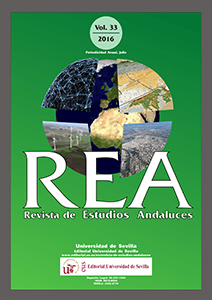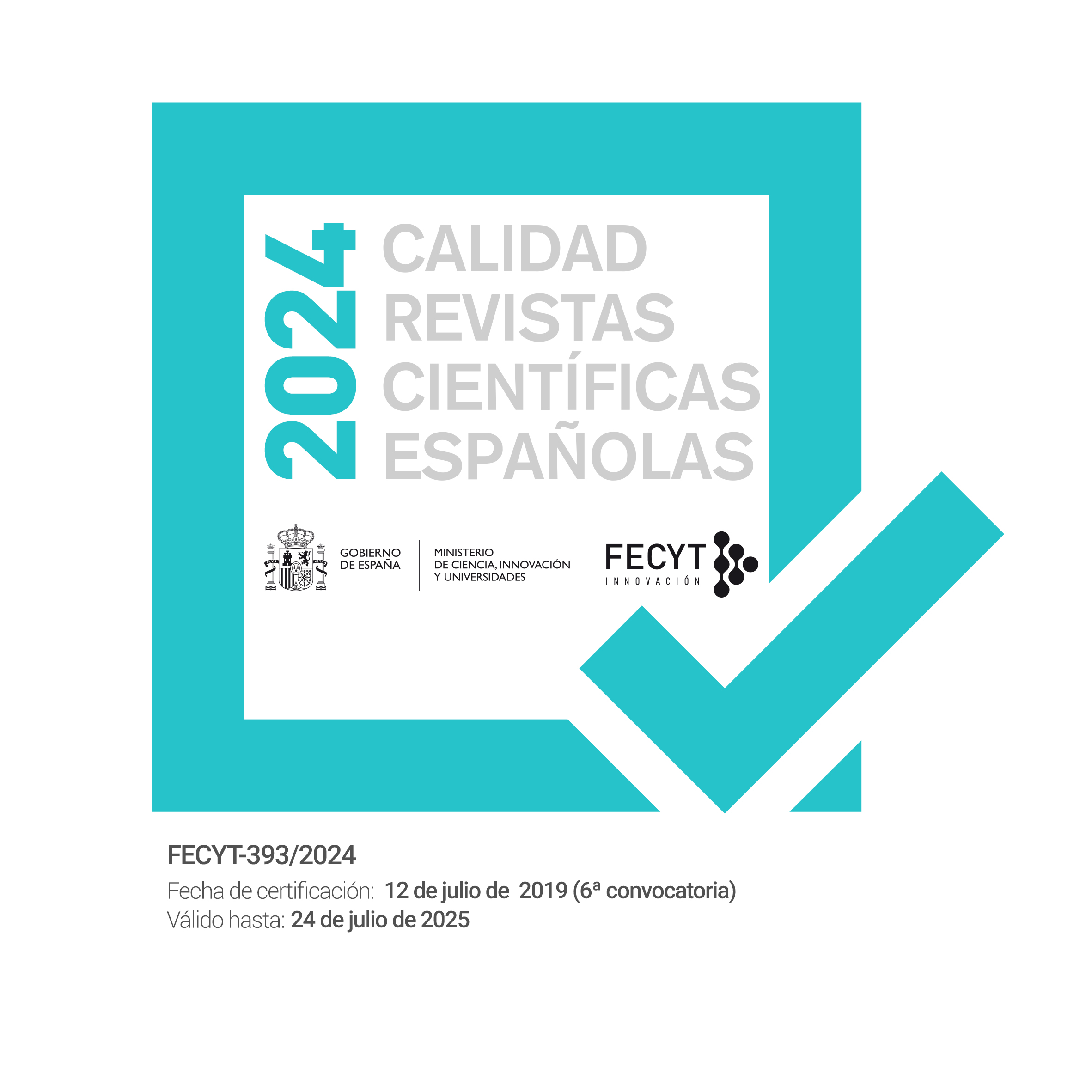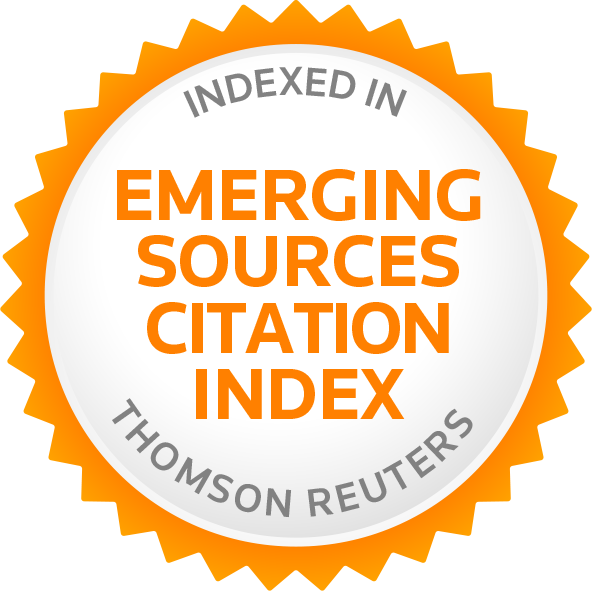Estudio de los Efectos de la Morfología Urbana en la Actividad Física
DOI:
https://doi.org/10.12795/rea.2016.i33.02Palabras clave:
Morfología urbana, dispersión urbana, hábitos de vida, actividad física, saludResumen
Un gran número de estudios, realizados principalmente en países anglosajones y del norte de Europa, han evaluado las posibles correlaciones existentes entre morfología urbana y la actividad física ligada a los desplazamientos (caminar y bicicleta). Los resultados de dichos estudios han puesto de manifiesto como las áreas urbanas de baja densidad, con usos de suelo segregados, escasez de servicios en proximidad, escasez de transporte público y espacios públicos de baja calidad reducen las probabilidades de desplazamientos relacionados con la actividad física (caminar y bicicleta) y aumentan la dependencia del vehículo privado. En este artículo se comprueba cómo estos resultados son coherentes con los obtenidos en un estudio realizado en un área de la Europa mediterránea concretamente en el municipio de Mairena del Aljarafe. Con ello es posible afirmar que en nuestro entorno existe también relación entre la morfología urbana, la actividad física y el uso de modos de transporte relacionados con la actividad física (caminar y bicicleta). Estos resultados deberían servir para que los planificadores y gestores territoriales y urbanísticos tomasen medidas encaminadas a evitar el aumento de áreas urbanas dispersas y el fomento de núcleos de centralidad. Estas medidas ayudarían a reducir la dependencia del vehículo privado y fomentarían los desplazamientos no motorizados, permitiendo mantener los tres pilares del desarrollo sostenible (ambiental, económico y social).
Descargas
Citas
Agudo, A et al. (2002): "Consumption of vegetables, fruit and other plant foods in European Prospective. Investigation into Cancer and Nutrition (EPIC) cohorts from 10 European countries", Public Health Nutrition, 5, 1179-1196. http://dx.doi.org/10.1079/PHN2002398
Bahrainy, H.; and Khosravi, H. (2013): "The impact of urban design features and qualities on walk ability and health in under-construction environments: The case of Hashtgerd New Town in Iran", Cities, 31, 17–28.
http://dx.doi.org/10.1016/j.cities.2013.01.001
Berrigan, D.; Troiano, R.P. (2002): "The association between urban form and physical activity in US adults", American Journal of Preventive Medicine 23, 74–79. http://dx.doi.org/10.1016/S0749-3797(02)00476-2
Berrigan, D.; Tatalovich, Z.; Pickle, L. W.; Ewing, R. and Ballard-Barbash, R. (2014): "Urban sprawl, obesity, and cancer mortality in the United States: cross-sectional analysis and methodological challenges", International Journal of Health Geographics 13, (1) 3. http://dx.doi.org/10.1186/1476-072X-13-3
Braçe, O. (2015): "Análisis de la influencia de la morfología urbana en la distribución de los servicios: El caso de Mairena del Aljarafe". En Espinosa, A., Antón, F.J. (eds) El papel de los servicios en la construcción del territorio: Redes y Actores. Alicante, Asociación de Geógrafos Españoles. Vol. 2, 347-358. ISBN: 978-84-944193-1-7
Brown, B. B.; Smith, K. R.; Hanson, H.; Fan, J. X.; Kowaleski-Jones, L.; and Zick, C. D. (2013): "Neighborhood design for walking and biking: Physical activity and body mass index", American Journal of Preventive Medicine, 44(3), 231–238. http://dx.doi.org/10.1016/j.amepre.2012.10.024
Bull, F.C.; Armstrong, T.; Dixon T.; Ham, S.A.; Neiman A. and Pratt, M. (2003): "Burden attributable to physical inactivity: examination of the 2002 World Health Report estimates", Medicine & Science in Sports & Exercise 35 (suppl 1): S359. http://dx.doi.org/10.1097/00005768-200305001-01993
Cano, G. (dir. y coord.) (2002): Las Comarcas Andaluzas. Ediciones Tartessos, Sevilla.
Cummings, S.R.; Nevitt M.C.; Browner W.S. et al. (1995): "Risk factors for hip fracture in white women. Study of Osteoporotic Fractures Research Group", The New England Journal of Medicine 332: 767–73. http://dx.doi.org/10.1056/nejm199503233321202
Elmadfa, I. and Weichselbaum, E. (Eds.). (2005): "European nutrition and health report 2004", Karger Medical and Scientific Publishers. Vol. 58.
http://dx.doi.org/10.1159/isbn.978-3-318-01501-0
Estabrooks, P.A.; Lee, R.E. and Gyurcsik, N.C. (2003): "Resources for physical activity participation: Does availability and accessibility differ by neighborhood socioeconomic status?", Annals of Behavioral Medicine 25, 100–104. http://dx.doi.org/10.1207/S15324796ABM2502_05
European Opinion Research Group EEIG. (2003): Eurobarometer: physical activity, Brussels, European Commision.
Ewing, R.; Meakins, G.; Hamidi, S. and Nelson, A. C. (2014): "Relationship between urban sprawl and physical activity, obesity, and morbidity - update and refinement", Health & Place 26, 118–26. http://dx.doi.org/10.1016/j.healthplace.2013.12.008
Ewing R.; Pendall R. and Chen D. (2003):" Measuring sprawl and its transportation impacts", Transportation Research Record, 1831. http://dx.doi.org/10.3141/1831-20
Ewing, R.; Schmid, T.; Killingsworth, R.; Zlot, A. and Raudenbush, S. (2003): "Relationship between urban sprawl and physical activity, obesity and morbidity", American Journal of Health Promotion 18, 47–57.
http://dx.doi.org/10.4278/0890-1171-18.1.47
Ewing, R.; Schmid, T.; Killingsworth, R.; Zlot, A. and Raudenbush, S. (2008): "Relationship between urban sprawl and physical activity, obesity, and morbidity", Urban Ecology: An International Perspective on the Interaction Between Humans and Nature 18 (1), 567–582. http://dx.doi.org/10.1007/978-0-387-73412-5_37
Frank, L.D. (2000): "Land use and transportation interaction: implications on public health and quality of life", Journal of Planning, Education and Research 20, 6–22. http://dx.doi.org/10.1177/073945600128992564
Frank, L.D.; Engelke, P.O. and Schmid, T.L. (2003): Health and Community Design: The Impact of the Built Environment on Physical Activity. Island Press, Washington.
Friedenreich, C.M. (2001): "Physical Activity and cancer prevention. From observational to intervention research", Cancer Epidemiology, Biomarkers & Prevention 10, 287–301.
Gotay, C.C. (2005): "Behavior and cancer prevention", Journal of Clinical Oncology 23, 301–10. http://dx.doi.org/10.1200/JCO.2005.06.069
Goldsmith, S.A. (1992): National bicycling and walking study. Case study No 1: Reasons why bicycling and walking are and are not being used more extensively as travel modes, United States Department of Transportation, Washington.
Jerrett, M.; Almanza, E.; Davies, M.; Wolch, J.; Dunton, G.; Spruitj-Metz, D. and Pentz, M. A. (2013): "Smart growth community design and physical activity in children", American Journal of Preventive Medicine, 45(4), 386–392.
http://dx.doi.org/10.1016/j.amepre.2013.05.010
Martens, K. (2004): "The bicycle as a feedering mode: experiences from three European countries", Transportation Research Part D: Transport and Environment 9, 281–294. http://dx.doi.org/10.1016/j.trd.2004.02.005
Merom, D.; Bauman, A.E.; Vita, P.; Close, G. (2003): "An environmental intervention to promote walking and cycling-the impact of a newly constructed Rail Trail in Western Sydney", Preventive Medicine 36, 235–242.
http://dx.doi.org/10.1016/S0091-7435(02)00025-7
Meisinger, C.; Lowel, H.; Thorand, B. and Doring, A. (2005): "Leisure time physical activity and the risk of type 2 diabetes in men and women from the general population: the Monica/Kora Augsburg Cohort Study", Diabetologia 48, 27–34. http://dx.doi.org/10.1007/s00125-004-1604-3
Rode, P. and Floater, G. (2014): Accesibility in cities: Transport and Urban Form, London.
Saelens, B.E.; Sallis, J.F.; Black, J.B. and Chen, D. (2003a): "Neighborhood-based differences in physical activity: an environment scale evaluation", American Journal of Public Health 93, 1552 - 1558. http://dx.doi.org/10.2105/AJPH.93.9.1552
Saelens, B.E.; Sallis, J.F. and Frank, L.D. (2003b):"Environmental correlates of walking and cycling: Findings from the transportation, urban design, and planning literatures", Annals of Behavioral Medicine 25, 80-91. http://dx.doi.org/10.1207/S15324796ABM2502_03
Savitch, H. V. (2003): "How Suburban Sprawl Shapes Human Well-Being", Journal of Urban Health 80 (4): 590–607. http://dx.doi.org/10.1093/jurban/jtg066
Seliske, L., W. Pickett, I. Janssen (2012): Urban sprawl and its relationship with active transportation, physical activity and obesity in Canadian youth. Health reports / Statistics Canada, Canadian Centre for Health Information 23 (2), 17–25.
Siegel, P.Z.; Brackbill, R.M. and Heath, G.W. (1995): "The epidemiology of walking for exercise: implication for promoting activity among sedentary groups", American Journal of Public Health 85, 706–710. http://dx.doi.org/10.2105/AJPH.85.5.706
Timperio, A.; Crawford, D.; Telford, A. and Salmon, J. (2004): "Perceptions about the local neighborhood and walking and cycling among children", Preventive Medicine 38, 39–47. http://dx.doi.org/10.1016/j.ypmed.2003.09.026
Land Transport Safety Authority (2000): New Zealand Travel Survey Report 1997/98, Ministry of Transport, Wellington.
Leslie, E.; Saelens, B.E.; Frank, L.D.; Owen, N.; Bauman, A.E.; Coffee, N. and Hugo, G. (2005): "Residents perceptions of walkability attributes in objectively different neighborhoods: a pilot study", Health& Place 11(3), 227-236. http://dx.doi.org/10.1016/j.healthplace.2004.05.005
Troped, P.J.; Saunders, R.P.; Pate, R.R.; Reininger, B.; Ureda, J.R. and Thompson, S.J. (2001): "Associations between selfreported and objective physical environmental factors and use of a community rail-trail", Preventive Medicine 32, 191–200. http://dx.doi.org/10.1006/pmed.2000.0788
USDHHS (U.S. Department of Health and Human Services) (1996): Physical activity and health: A report of the surgeon general. U.S. Department of Health and Human Services/ Centers for Disease Control and Prevention/National Center for Chronic Disease Prevention and Health Promotion, Atlanta.
USDHHS (U.S. Department of Health and Human Services) (2000): Promoting Better Health for Young People Through Physical Activity and Sports: A Report to the President From the Secretary of Health and Human Services and the Secretary of Education. U.S. Department of Health and Human Services, Centers for Disease Control and Prevention, Atlanta, GA.
Vojnovic, I.; Jackson-Elmoore, C.; Holtrop, J. and Bruch, S. (2006): "The renewed interest in urban form and public health: Promoting increased physical activity in Michigan", Cities, 23(1), 1–17. http://doi.org/10.1016/j.cities.2005.07.007
http://dx.doi.org/10.1016/j.cities.2005.07.007
Ward Thompson, C. (2013): "Activity, exercise and the planning and design of outdoor spaces", Journal of Environmental Psychology 34, 79–96.
http://dx.doi.org/10.1016/j.jenvp.2013.01.003
World Health Organization (2004): Global strategy on diet, physical activity and health. World Health Organization, Geneva.
World Health Organization (2010): Global recommendations on physical activity for health. Geneva: World Health Organization. http://dx.doi.org/10.1007/978-3-319-10578-9_34
Descargas
Publicado
Cómo citar
Número
Sección
Licencia
La edición electrónica de la Revista de Estudios Andaluces se ofrece en acceso abierto desde el número 28 publicado en 2011 hasta la actualidad. Las ediciones impresa y electrónica de esta Revista son editadas por la Editorial de la Universidad de Sevilla, siendo necesario citar la procedencia en cualquier reproducción parcial o total.
La Revista de Estudios Andaluces no cobra tasas por el envío de trabajos, ni tampoco cuotas por la publicación de sus artículos. La Revista es gratuita desde el momento de la publicación de cada número y sus contenidos se distribuyen con la licencia “CreativeCommons Atribución-NoComercial-SinDerivar 4.0 Internacional” , que permite al usuario de la Revista de Estudios Andaluces criterios que cumplen con la definición de open access de la Declaración de Budapest en favor del acceso abierto. Puede consultar desde aquí la versión informativa y el texto legal de la licencia. Esta circunstancia ha de hacerse constar expresamente de esta forma cuando sea necesario.







